 | ||
An acyl halide (also known as an acid halide) is a chemical compound derived from an oxoacid by replacing a hydroxyl group with a halide group.
Contents
- Aliphatic acyl halides
- Aromatic acyl halides
- Reactions
- Multiple functional groups
- General hazards
- References

If the acid is a carboxylic acid, the compound contains a –COX functional group, which consists of a carbonyl group singly bonded to a halogen atom. The general formula for such an acyl halide can be written RCOX, where R may be, for example, an alkyl group, CO is the carbonyl group, and X represents the halide, such as chloride. Acyl chlorides are the most commonly encountered acyl halides, but acetyl iodide is the one produced (transiently) on the largest scale. Billions of kilograms are generated annually in the production of acetic acid.

The hydroxyl group of a sulfonic acid may also be replaced by a halogen to produce the corresponding sulfonyl halide. In practical terms this is almost always chloride to give the sulfonyl chloride.

Aliphatic acyl halides
Common laboratory methods for the synthesis of acyl halides entail the reaction of carboxylic acids with reagents such as thionyl chloride or phosphorus trichloride for acyl chlorides, phosphorus pentabromide for acyl bromides, and cyanuric fluoride for acyl fluorides.
Aromatic acyl halides
Aromatic acyl halides can be prepared in similar reactions with similar reagents; however, some specialty reactions are also available to produce these compounds. For example, chloroformylation, a specific type of Friedel-Crafts acylation which uses formaldehyde as a reagent, or by the direct chlorination of benzaldehyde derivatives.
Reactions
Acyl halides are rather reactive compounds often synthesized to be used as intermediates in the synthesis of other organic compounds. For example, an acyl halide can react with:
In the above reactions, HX (hydrogen halide or hydrohalic acid) is also formed. For example, if the acyl halide is an acyl chloride, HCl (hydrogen chloride or hydrochloric acid) is also formed.
Multiple functional groups
A molecule can have more than one acyl halide functional group. For example, "adipoyl dichloride", usually simply called adipoyl chloride, has two acyl chloride functional groups; see the structure at right. It is the dichloride (i.e., double chloride) of the 6-carbon dicarboxylic acid adipic acid. An important use of adipoyl chloride is polymerization with an organic di-amino compound to form a polyamide called nylon or polymerization with certain other organic compounds to form polyesters.
Phosgene (carbonyl dichloride, Cl–CO–Cl) is a very toxic gas that is the dichloride of carbonic acid (HO–CO–OH). Both chloride radicals in phosgene can undergo reactions analogous to the preceding reactions of acyl halides. Phosgene is used a reactant in the production of polycarbonate polymers, among other industrial applications.
General hazards
Volatile acyl halides are lachrymatory because they can react with water at the surface of the eye producing hydrohalic and organic acids irritating to the eye. Similar problems can result if one inhales acyl halide vapors. In general, acyl halides (even non-volatile compounds such as tosyl chloride) are irritants to the eyes, skin and mucous membranes.
